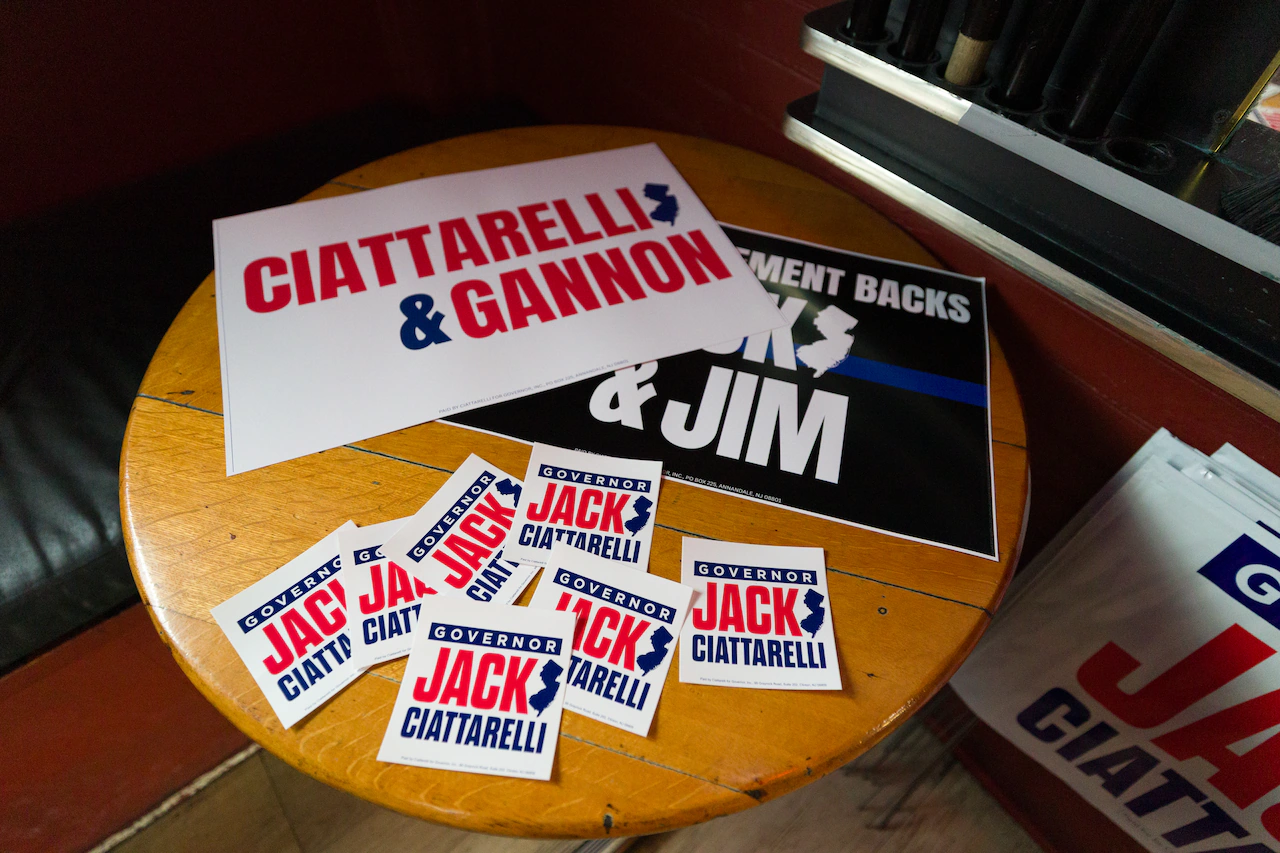
Those attack ads aren’t cheap.
Less than a month before New Jersey’s pivotal election for governor, the contest is already the state’s most expensive ever, with spending expected to easily top $200 million for the first time.
So far, at least $43 million has been spent in the general election between Democrat Mikie Sherrill and Republican Jack Ciattarelli, on top of a record $145 million spent in the crowded spring primary, campaign financial disclosures show.
And the total figure will only grow as the tight race enters its backbreaking final days before Nov. 4. It speaks to the competitiveness of one of the country’s marquee political contests of 2025, analysts say.
“There’s definitely a sense that either side can win,” said Micah Rasmussen, the director of Rider University’s Rebovich Institute for New Jersey Politics. “And I think that all of that adds up to both parties taking their best shot and making an investment.”
Sherrill, a congresswoman, has a fundraising edge with four weeks to go, according to disclosures filed Monday. Her campaign reported $6.3 million in cash on hand, $2.6 million more than Ciattarelli, a former state assemblyman.
Outside spending groups have buoyed Sherrill’s campaign, spending at least $12.2 million in support of her, compared to at least $7.3 million in funds backing Ciattarelli, according to filings.
Nationally, the mammoth expenditures come as New Jersey is one of just two states with gubernatorial contests this year, making it an early testing ground of Republican President Donald Trump’s popularity.
Locally, they come as Democrats seek to hold onto the governor’s mansion despite the headwinds of history: The last time a party won three consecutive governor’s races was in 1961.
Sherrill is trying to reverse that 64-year trend by succeeding Gov. Phil Murphy, who is leaving office after two terms in a state where Democrats hold an 855,000 voter-registration edge.
Ciattarelli is hoping to triumph in his third bid to lead New Jersey, riding a wave of conservative enthusiasm and changing voter mores that have brought steady gains to the GOP.
Both campaigns have had no trouble winning over donors, filings show, in a state that evens the playing field by providing matching funds to candidates as they raise money.
Sherrill has already raised $17.5 million, including $9.7 million in public financing, according to the disclosures. Ciattarelli has raised $16.5 million, including $9.6 million in matching funds.
So far, the Republican has spent more money than his opponent. His campaign reported $12.6 million in expenditures compared to Sherrill’s $11 million, contributing to the gap in Ciattarelli’s cash on hand.
“Two-time loser Jack Ciattarelli’s flailing campaign is only going to get worse as he faces a $2.6 million cash deficit,” Sherrill spokesman Sean Higgins said in a statement. “Mikie’s campaign is well-positioned to make sure every New Jersey voter learns about her bold agenda to bring down costs and Jack’s long track record of raising taxes.”
Ciattarelli’s campaign said it is confident it will have the funds it needs to get out its message. The race’s hefty spending speaks to how worried Democrats are about their candidate, despite their built-in advantages, said Ciattarelli strategist Chris Russell.
“Certainly our side believes we can win, and Democrats are panicked,” Russell said.
The state’s second most expensive governor’s race was two decades ago and involved two multimillionaires who opened their own checkbooks to their campaigns, according to the state Election Law Enforcement Commission.
Adjusting for inflation, the 2005 contest between Democrat Jon Corzine, the winner, and Republican Doug Forrester cost $145.5 million across the primary and general election.
This year’s primary alone nearly broke that record, amid a crowded field of six Democrats and five Republicans. Together, they spent more than $62 million to try to win their nomination, on top of $83 million in outside spending, according to the election commission.
Outside groups continue to pour money into the general election, disclosures show.
In July, the Democratic Governors Association announced it was reserving $20 million in television, digital and streaming advertisements for Sherrill. The super PAC it is funding, Greater Garden State, so far has spent $12.1 million, disclosures show.
On the other side, the Republican Governors Association has spent $7.3 million on behalf of Ciattarelli through Restore New Jersey, another super PAC.
The spending has produced a flood of attack ads targeting voters on television, their phones and in their mailboxes. Both sides charge their opponents have twisted facts in that outreach.
Ciattarelli’s campaign has blasted Democrats over an ad claiming he is considering raising the sales tax. Sherrill’s camp has bristled over a GOP ad suggesting she was dismissive of high energy bills, another topical issue.
Matthew Hale, a political science professor at Seton Hall University, said he expects both sides will have the money they need in the final stretch of the campaign. That’s even as New Jersey sits in an expensive media market, where broadcast advertising in New York and Philadelphia is costly.
Hale’s message: It is only getting started.
“If you think there’s a lot of ads now, wait a couple weeks and they’re going to be everywhere,” he said.